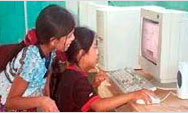The remote rural highlands of Guatemala were the most affected by the 36-year civil war. Mayan families, particularly women and children, suffer the economic and social consequences of severe lack of education, health, and income generation opportunities. Families in these remote villages get their bread from neighboring towns that are a long walk away. Bread is brought in only once or twice a week during market days, and then stored in people’s homes where it gets moldy or insect infested.
USAID teamed with the Nutrition Institute of Central America and Panama (INCAP), local bakery supply companies and bakeries to design a project that trained villagers to bake as well as run clean, productive bakeries as productive enterprises. Basic bakery equipment and a two week’s supply of ingredients were provided by USAID. A small, sanitary structure was constructed to support the operation. USAID developed a how-to-kit so bakeries may be built and opened in other rural areas of Guatemala.
After only two months of operation, the bakery produces about 10,000 lbs a day of five to twelve varieties of bread, including about 3,000 rolls which are sold both in the early morning and at afternoon snacktime. The bakery sells bread to local store owners and delivers bread to “tiendas” in neighboring hamlets which sell the bread to the community. The money for ingredients now comes from the proceeds of sales of baked goods. As a result of USAID, new income is generated, nutrition improved, and smiles are put on young children’s faces.
|


